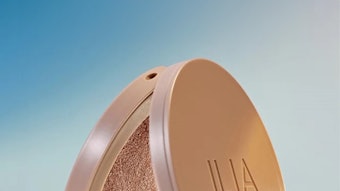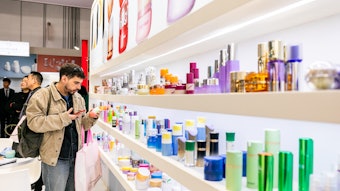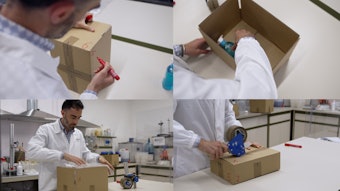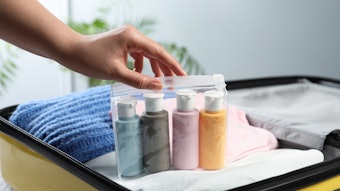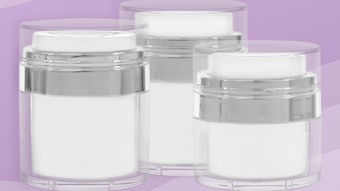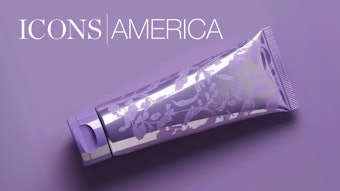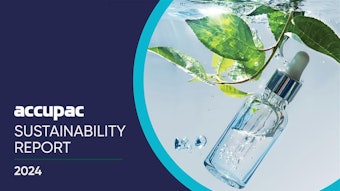
As the world becomes increasingly conscious of sustainability, the beauty industry is evolving as well, shifting from traditional practices to eco-friendly product innovation. This revolution is spurred on by factors like increasing consumer interest in sustainable products, growing environmental consciousness and regulatory pressures. Brands are not just talking the talk, but walking the walk, changing the game with practices like biodegradable packaging, refillable compacts and the use of clean ingredients. Whether it's the bustling indie brands or the established industry leaders, everyone is keen on creating a cleaner, greener future for beauty.
Log in to view the full article
As the world becomes increasingly conscious of sustainability, the beauty industry is evolving as well, shifting from traditional practices to eco-friendly product innovation. This revolution is spurred on by factors like increasing consumer interest in sustainable products, growing environmental consciousness and regulatory pressures. Brands are not just talking the talk, but walking the walk, changing the game with practices like biodegradable packaging, refillable compacts and the use of clean ingredients. Whether it's the bustling indie brands or the established industry leaders, everyone is keen on creating a cleaner, greener future for beauty.
How Sustainable Initiatives are Transforming Product Development in the Beauty Industry
 Jane Tervooren, co-founder, director, Validated Claim Support.Validated Claim Support
Jane Tervooren, co-founder, director, Validated Claim Support.Validated Claim Support
Stephanie Rowntree, international product manager, HCP Packaging, says, “Sustainable initiatives are fundamentally transforming product development in the beauty industry, driven by consumer demand, heightened environmental awareness, and increasing regulatory pressures. Brands are progressively adopting circular economy principles, while regulations like the U.K. Plastic Packaging Tax, the upcoming EU Packaging and Packaging Waste Regulation, and in the U.S., the Plastic Pollution Prevention Act (California Senate Bill 54, a new EPR legislation with wide influence) are accelerating this shift.”
Rowntree adds, “Innovation in design for recyclability is a major focus, prompting us to develop packaging solutions that prioritize sustainability. These include the use of materials widely accepted for recycling, mono-material designs to reduce contamination in the recycling stream, and refillable or rechargeable options that not only minimize waste and resource consumption, but also enhance brand loyalty.”
 Stephanie Rowntree, international product manager, HCP Packaging.HCP Packaging
Stephanie Rowntree, international product manager, HCP Packaging.HCP Packaging
 Johan Jansen-Storbacka, director, personal care, health and biosciences, IFF.International Flavor and Fragrance
Johan Jansen-Storbacka, director, personal care, health and biosciences, IFF.International Flavor and Fragrance
Jansen-Storbacka adds, “Additionally, consumers demand that sustainable products perform well and are cost-effective. The industry is expected to deliver the efficacy consumers expect, based on the sustainable value they take for granted.”
How Consumer Demand for Sustainability is Shaping Marketing Strategies in the Beauty Industry
Tervooren says, “Consumer demand for sustainability has totally flipped the script on beauty marketing! Now, it’s all about keeping it real with transparency, eco-chic vibes, and authentic storytelling. Brands are proudly shouting out their cruelty-free badges, vegan-friendly formulas, and planet-saving packaging in campaigns that feel more like a movement than a sales pitch. Ethical sourcing? Carbon-neutral goals? Community love? That’s the new beauty talk. Social media is buzzing with green beauty influencers, turning eco-conscious living into the hottest trend. And those sustainability reports? They’re the new trust builders. It’s all about aligning with values, winning hearts, and standing out amongst the sea of competitors!”
Fabrice Lefevre, Ph.D., marketing innovation director, Givaudan Active Beauty, says, “Sustainability has become a central factor in the purchasing decisions of today’s consumers. Across all demographics—regardless of age, gender, or geographical location—the environment remains a cause that deeply resonates. Consumers are increasingly prioritizing products that align with their values, seeking options that are not only effective, but also contribute to a healthier planet.”
 Fabrice Lefevre, Ph.D., marketing innovation director, Givaudan Active Beauty.Givaudan Active Beauty
Fabrice Lefevre, Ph.D., marketing innovation director, Givaudan Active Beauty.Givaudan Active Beauty
He adds, “European and American consumers also show a heightened focus on sustainability, with increasing awareness of the environmental impact of their choices. For them, sustainability is not just a trend—it’s an essential element of the value equation when evaluating a brand’s offerings. This shift underscores a broader transformation within the beauty industry. Brands that prioritize eco-design, ethical sourcing, and transparency are not just meeting consumer demand—they are shaping the future of the industry. From biodegradable packaging to responsibly sourced ingredients, these efforts are now table stakes for engaging a generation that views beauty as an extension of their values. Ultimately, sustainability is no longer a niche concern but a universal expectation. Companies that integrate environmental responsibility into their DNA are poised to win the trust and loyalty of consumers worldwide.”
Indie Brands and Big Beauty Team Up to Drive Sustainability
Tervooren says, “Smaller indie beauty brands have been stealing the sustainability spotlight, showing off their eco-savvy moves with refillable packaging, clean ingredients, and planet-loving vibes. They’re agile, creative, and know how to connect with eco-conscious consumers. But big beauty isn’t sitting this one out! The giants are catching up, rolling out bold sustainability promises, snapping up green startups, and rethinking their practices. It’s like a friendly competition for the planet’s sake. While the little guys lead with heart and innovation, the big players bring the money muscle to make a massive impact. Together, they’re reshaping the beauty industry—greener and better than ever!”
Navigating Regulatory Changes While Adopting Sustainable Practices
Rowntree says, “Sustainability is not only a guiding principle, but also an enduring trend shaping the future of the beauty industry. Its influence will undoubtedly expand, driving innovation and fostering new practices across the sector.”
She adds, “Several key drivers will shape this evolution. Legislation remains a significant catalyst for change, as recent regulatory measures have demonstrated. Globally, upcoming environmental regulations for the next decade will continue to push brands to adopt sustainable practices, either through compliance mandates or financial incentives.”
Rowntree continues, “Consumer demand is arguably the most powerful force propelling sustainability. With environmental concerns frequently highlighted in the media, consumer awareness influences purchasing decisions, encouraging brands to offer more eco-friendly products.”
She concludes, “Achieving sustainability and circularity, however, is not something any single brand or organization can accomplish alone. Collaboration across the supply chain is essential. From raw material suppliers to freight companies, stakeholders must work together to create impactful, environmentally conscious products. We anticipate that these partnerships will grow, enabling the development of innovative solutions that meet both consumer expectations and sustainability goals.”
Finding the Balance Between Affordability and Sustainability Without Compromising on Quality
 Brands and manufacturers face continued challenges as consumers become more educated about the ingredients that are used in the beauty products they purchase.AdobeStock by Анна Демидова
Brands and manufacturers face continued challenges as consumers become more educated about the ingredients that are used in the beauty products they purchase.AdobeStock by Анна Демидова
He adds, “This intention-action gap can be attributed to various factors including the perceived trade-off between sustainability and product performance. Additionally, the availability, accessibility, and affordability of sustainable options can influence purchasing decisions.”
Jansen-Storbacka says, “To drive meaningful change in the beauty and personal care industry requires reaching quantities that matter. Leveraging the economy of scale is pivotal for driving innovation and reducing costs. As production volumes increase, per-unit costs decrease, making sustainable products more accessible and competitive in the market. This, in turn, can influence broader consumer behavior toward eco-conscious choices.” Indie Lee, founder of clean skin care brand Indie LeeIndie Lee
Indie Lee, founder of clean skin care brand Indie LeeIndie Lee
Indie Lee, founder of clean skin care brand Indie Lee says, “We believe that sustainability and effectiveness go hand in hand, and we’re proud of how far the industry has come in achieving this balance. When I first entered the clean beauty space, the options for eco-friendly ingredients that could deliver proven, science-backed results were limited. But consumer demand for sustainable and “clean” products has redefined the beauty landscape, making it possible—and essential—to prioritize both.”
Lee adds, “Today’s ingredient technology has evolved to allow us to create high-performance formulas that are both safe and environmentally responsible. It’s incredibly rewarding to see that we no longer have to sacrifice efficacy or environmental standards; instead, we’re able to offer our customers beautiful products that honor their commitment to sustainability and align with our brand’s values.”
Lefevre says, “It’s clear that there’s no turning back when it comes to sustainability. This has been a focus for over a decade, driven by growing consumer expectations—particularly from younger generations in the beauty industry—continues to grow. These consumers are looking for values that go beyond sustainability, focusing on what we call transparency. From one of our consumer studies, 88% of beauty consumers, when buying a cosmetic product, want to know the story and the traceability of the ingredients inside."
He adds, "They want to understand a brand’s ethos, the origins of its ingredients, how they are made, their environmental impact, and why the brand chose them for a product. Ultimately, they want to know how these choices directly benefit them. For these consumers, beauty is a purposeful act—an opportunity to make a meaningful impact. They are actively seeking deeper insights, whether through their own research or with the help of apps that provide detailed information on ingredient sourcing and the socio-economic commitments of beauty brands.”
The wave of transformation washing over the beauty industry is rapidly turning sustainability from a mere niche to a standard expectation. Consumers actively demand green products, pushing companies to embrace ethical sourcing, transparency and responsibility toward the environment. This change is not just skin-deep; we see deep-seated collaborations across supply chains, ingenious materials, and a stern focus on cost-effectiveness alongside quality. As sustainability becomes the driving force of the beauty industry, brands that make environmental responsibility part of their core philosophy have a better chance of earning consumer loyalty and trust. The future of beauty is green, and it’s here to stay.






